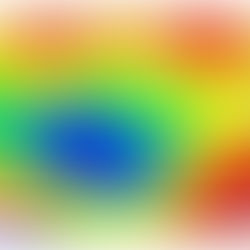Reason for the Season

On a particularly hot and sunny day a few weeks ago, our daughter was curious to know if Christmas was coming "soon." Being in the northern hemisphere, I was rather surprised that she failed to recognize that the season was getting progressively warmer - not cooler. We briefly discussed that first it will get warmer before it gets cooler, although there are parts of the world in which Christmas does, in fact, occur during one of the warmest parts of the year; the northern hemisphere is about to enter into the season of summer, while the southern hemisphere is approaching winter. Naturally, she wanted to know why summer is associated with warmth. Although the reason for the outdoor temperature is multi-faceted, the reason for the season really has to do with a concept called flux, something that is quantifiable with your smartphone in units of lux, or luminous flux per unit area.

I've seen lots of attempts to explain flux in ways that are simply not accessible to small children (...and inexperienced adults). Conceptualizations, like this one from NASA's Space Place, often fail to have much lasting change on student thinking. As a student, I remember struggling with images like these...
Why do all of the sun's rays come parallel? This is an issue of scale, which is very poorly represented in the image. The sun's rays actually do go out in all directions, but we are dealing with a very small segment of the "arc" of rays coming from the sun...a small segment of a circle is nearly a "line."
Why does it matter if a single ray hits the Earth "straight on" or at an angle? Although the image makes it look like a single right might hit someone in a given area, the reality is that we are dealing with many more "rays" of light. It isn't the angle of a single ray, but how the angle of many rays influences the number of rays that hit a given area. This is a question of flux, something I really didn't understand until college physics!
The popularized study in the documentary, Minds of Our Own, demonstrated how even after repeated instruction, students revert back to their own mental models in which the seasons are erroneously described by students as being caused by changing distances from the sun. This very persistent and pervasive misconception has been captured in astronomy and physics education research through concept inventories such as the Astronomical Misconceptions Survey and the Test of Astronomy Standards.

About ten years ago, during my student teaching days, I observed my cooperating teacher, Roger Baldwin, work with students to place a very bright lamp, shining horizontally toward a globe resting on a tilted axis. Thermometers were placed on the northern and southern hemispheres for the remainder of the class, and a small difference of a few degrees in temperature was observed. A few months ago, I observed something similar in the Physics Education Department at the University of Cologne, in Germany. Physics teacher educator Andre Bresges has cleverly placed Velcro on his lab globe so that light sensors can be temporarily mounted at different latitudes.

Looking for an even simpler way to explain this - and the concept of flux - to our five-year-old daughter, I asked her to observe changes in light as she suspended a piece of white card stock in the sunlight and changed its angle. Of course, this should be done with one's back toward the sun, so that the light reflects from the paper to the observers' faces. White note cards are even more effective. Flux is then usually really understandable by induction: when the card is really bright, it receives many more rays of light per unit area; when the card is dim, it is because it has received fewer rays of light per unit area. Although I'm not sure she totally drew a connection between the changing angle of the paper and the changing angle of the surface of the Earth with respect to the sun's rays, she clearly understood that angle with respect to the sun is important. Note: This isn't an entirely "fair" comparison considering that as the angle is changed, the "perceived surface area" from the viewer's perspective also changes, but this probably suffices for small children. A more effective method might be to view changes in brightness through a tube that produces a visual scope that always remains the same size. It's also important to mention that only extreme changes in brightness are apparent to the human eye. Our pupils dilate and retract dependent upon the actual brightness: as a result of our eyes' accommodation, when comparing two objects, the brighter object might actually appear dimmer!
When appropriate, it is possible to objectively observe changes in brightness with Physics Toolbox Light Meter placed along a "make-shift" globe with a designated equator: the light meter sensor accessed by the app does not accommodate to changes in brightness, unlike our eyes or the screen output of the camera sensors, which can make relative brightness unintelligible. A large light source placed parallel to the globe is important, but could also be substituted by the actual sun when it is very low on the horizon. Apparent differences in seasons can be modeled by holding the smartphone tangent to the surface at various points, and changing the tilt of the Earth's axis to model relative angle of the axis at various times of the year as it goes around the sun. Using Physics Toolbox Orientation and a steady hand, data can even be collected for changing angle versus light intensity. Note: Physics Toolbox Suite will soon have the ability to record Orientation and Light Intensity data in the Multi Record mode. (Extension: Ask students to predict the nature of the relationship between angle and luminosity when the sun is not near the horizon). This particular quantitative solution might be most appropriate for older students and adults, but can be very effective!













